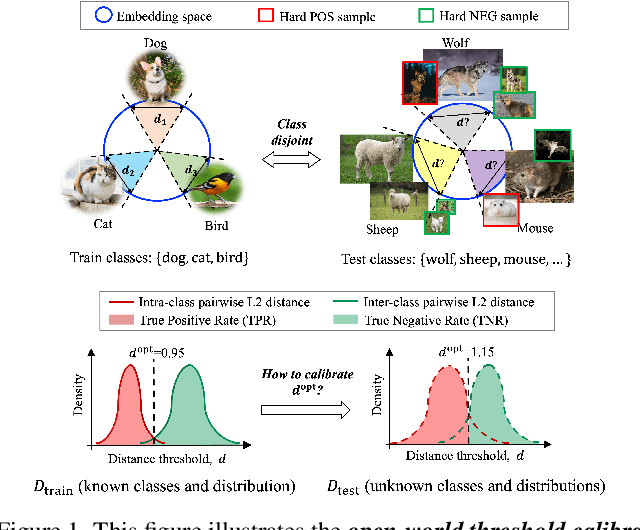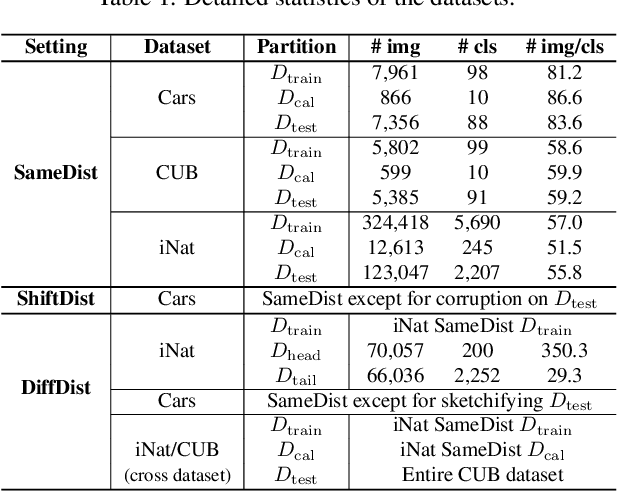Learning for Open-World Calibration with Graph Neural Networks
Paper and Code
May 19, 2023



We tackle the problem of threshold calibration for open-world recognition by incorporating representation compactness measures into clustering. Unlike the open-set recognition which focuses on discovering and rejecting the unknown, open-world recognition learns robust representations that are generalizable to disjoint unknown classes at test time. Our proposed method is based on two key observations: (i) representation structures among neighbouring images in high dimensional visual embedding spaces have strong self-similarity which can be leveraged to encourage transferability to the open world, (ii) intra-class embedding structures can be modeled with the marginalized von Mises-Fisher (vMF) probability, whose correlation with the true positive rate is dataset-invariant. Motivated by these, we design a unified framework centered around a graph neural network (GNN) to jointly predict the pseudo-labels and the vMF concentrations which indicate the representation compactness. These predictions can be converted into statistical estimations for recognition accuracy, allowing more robust calibration of the distance threshold to achieve target utility for the open-world classes. Results on a variety of visual recognition benchmarks demonstrate the superiority of our method over traditional posthoc calibration methods for the open world, especially under distribution shift.
 Add to Chrome
Add to Chrome Add to Firefox
Add to Firefox Add to Edge
Add to Edge